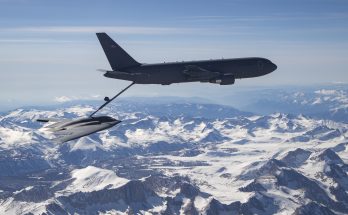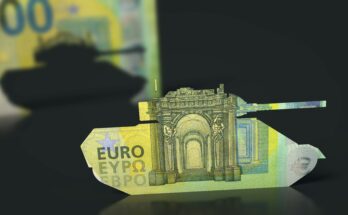
Amidst a national atmosphere of pervasive public disillusionment and rising political atomization, peasant son and former labor activist Pedro Castillo arose from near anonymity in 2021 to surprise domestic and international observers alike by attaining the Peruvian presidency in a narrowly achieved two-round victory over Keiko Fujimori, scion of the influential Fujimori political dynasty. Disillusioned by years of dysfunctional and scandal-riven governance under the leadership of established political parties, Peruvian voters hoped that Castillo’s outsider background and promise to redress the country’s deep social and economic imbalances might at last usher in a better future, despite trepidation about his lack of experience and uncertain policy program.
Scarcely more than a year later, an increasingly embattled Castillo has been unceremoniously removed from office after an abortive self-coup (autogolpe). On the cusp of facing a third impeachment attempt from the Peruvian Congress, Castillo suddenly took to the airwaves on December 7 to announce the formation of a “government of exception.” Congress would be dissolved, rule by decree would be established, and a national curfew would be imposed ahead of a planned revision of the country’s Constitution and, eventually, new elections. The announcement resonated with worrying parallels to the 1992 autogolpe that ushered in a decade of autocratic rule under President Alberto Fujimori. Yet Castillo had barely even finished his address when his own vice president and cabinet of ministers tendered their resignations in protest, a normally divided Congress voted overwhelmingly across the political spectrum to remove him from office, and the armed forces and police explicitly disavowed participation in an act deemed in violation of the Constitution. The gambit that Castillo had launched as a bid to preserve and consolidate his waning power instead concluded mere hours later with his unceremonious arrest by Lima police officers.
The expeditious conclusion and near unanimous rejection of Castillo’s autogolpe cannot disguise that the episode represents not only one of the most precarious tests of Peruvian democracy since the fall of Fujimori but also a new nadir in a fragile political system that has been characterized for the past two decades by an intensifying condition of dysfunction and crisis. Through all this tumult, Peruvians have resiliently and stubbornly defended their hard-won democratic institutions. Still, with each new constitutional crisis, the question arises: How long can a system persist in a state of perpetual crisis before it reaches a breaking point?
While Castillo’s attempted autogolpe is among the most dramatic episodes of recent Peruvian history, the crisis and his subsequent fall from grace by no means materialized from a vacuum. After a decade of autocratic rule following his own 1992 autogolpe, Alberto Fujimori was unseated from power in 2000 and later arrested and charged by Peruvian authorities for massive embezzlement and human rights abuses. Although Peru successfully transitioned back to democracy, the contradictory legacies of this period continue to weigh heavily upon the country’s political landscape. Fujimori’s liberalized development framework brought about much-needed macroeconomic growth and stability after years of volatility but further stratified the country’s yawning wealth imbalances. Although Fujimori’s imprisonment has rendered him largely inert as an independent political actor, the well-heeled political machines and patronage networks that flourished under his tenure remain influential in Peruvian electoral politics – most straightforwardly exemplified by the Popular Force, the political party led by his daughter Keiko. Meanwhile, despite revisions made during the democratic period, the country’s Constitution fundamentally remains based on the 1993 version ratified in the immediate aftermath of the Fujimori autogolpe. The careers of Peru’s presidents have rarely ended auspiciously. Former Presidents Toledo, Garcia, Humala, and Kuczynski were all levied with charges of corruption after their terms in office had concluded. In the past seven years alone, Peru has cycled through five presidents and interim leaders. Recent presidents Kuczynski and his successor, Martin Vizcarra, were both ultimately unseated following two successive impeachment attempts by Congress. Castillo’s presidency had survived two such episodes, with his autogolpe intended to avert the impending prospect of a third.
In this regard, Castillo’s attempted autogolpe simply represents the most extreme configuration of an increasingly familiar pattern of events. Relations between Peruvian executive administrations and the national legislature in recent years have consistently been characterized by stark antagonism that quickly gives way to paralyzing gridlock. Frustrated by their inability to enact their agenda, Peruvian executives have felt increasingly compelled to pursue dramatic, and in Castillo’s case extralegal, action in order to break the impasse.
Indeed, it has only been three years since Peru’s last constitutional crisis. Following President Kuczynski’s impeachment in the wake of a bribery scandal and controversial attempt to extend a pardon to former president Fujimori, his vice president, Martin Vizcarra, assumed the presidency in 2018, vowing to pursue an ambitious campaign to combat corruption and reform the country’s sclerotic political institutions. However, his ability to attain passage of his flagship anti-corruption bill quickly ran aground upon vociferous legislative opposition, particularly from the Popular Force.
Under the terms of the Peruvian Constitution, the executive is legally permitted to dissolve Congress and call for new elections and the formation of a government after two successive votes of no-confidence. Decrying ongoing legislative opposition to his anti-corruption bill as obstruction, Vizcarra invoked this executive privilege ahead of what he deemed to be an impending de facto second vote of no-confidence. Congress voted to suspend Vizcarra from the presidency, alleging that the move was premature and unconstitutional, but other state institutions and the public perceived the act as broadly in keeping with established legal precedent and Vizcarra remained in office. Indeed, Vizcarra’s public approval ratings vaulted to upwards of 80 percent in the aftermath of the incident, a staggeringly high figure from an electorate otherwise disaffected with his political leadership.
Less than a year later, however, Vizcarra was out, removed following a second impeachment on the grounds of moral incapacity amidst rising allegations of corruption from the opposition. Although mass protests erupted in the incident’s wake, with many decrying the impeachment as a legislative coup, Vizcarra acceded to the vote and resigned from office. Congress subsequently barred Vizcarra from returning to office for 10 years following corruption allegations regarding access to COVID-19 vaccines.
It was amidst this increasingly atomized and disaffected political environment that Castillo, possessing humble origins and little previous political experience, proved able to achieve an electoral victory against the established largess of Keiko Fujimori. Almost from his administration’s first moments, however, Castillo’s capacity to enact his policy platform became paralyzed by the same structural impediments to governance that had so bedeviled Vizcarra. The stark challenges inherent in the administration’s relationship with an opposition-dominated Congress were compounded by its chaotic management style, high rates of personnel turnover, and repeated self-inflicted errors that steadily alienated its electoral base and even its closest allies. By the time of his attempted autogolpe, Castillo’s public approval ratings had already plunged into the low 20s as corruption investigations ensnared a widening ring of figures surrounding his presidency. He had even lost his place in Free Peru, the left-leaning political party with which he had campaigned during the election cycle. Isolated from his former allies and rendered increasingly inert by the legislative opposition, Castillo’s autogolpe represented a desperate last-ditch effort to reclaim his administration’s latitude of action.
A lifelong enthusiast of armored vehicles, Thomas serves as an analyst on Forecast International's Military Vehicles Forecast product. In addition, Thomas is responsible for updating the reports and analysis within Forecast International's International Military Markets – Latin America & Caribbean product. He also provides analysis for Forecast International's Airborne Retrofit & Modernization Forecast. Before this assignment, Thomas served as a research assistant for Forecast International's analytical team and has made written contributions to the Civil Aircraft Forecast, Military Aircraft Forecast, and Rotorcraft Forecast services. Thomas derives his knowledge from a multidisciplinary background, with a strong emphasis on the history and politics of Russia and the former satellite republics of the Soviet Union. He has studied in the Russian Federation at Saint Petersburg State University and is proficient in the Russian language at an advanced level.




